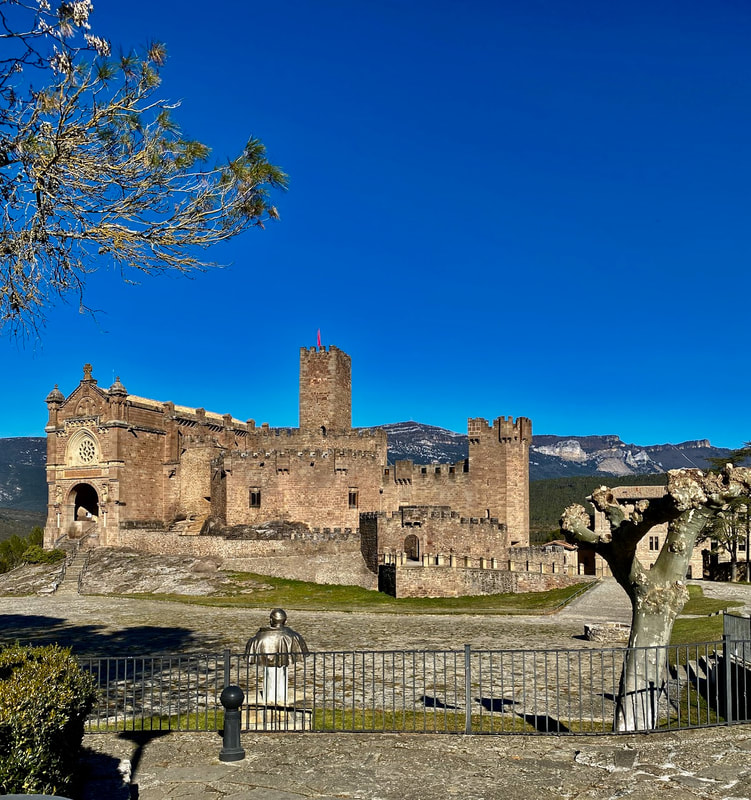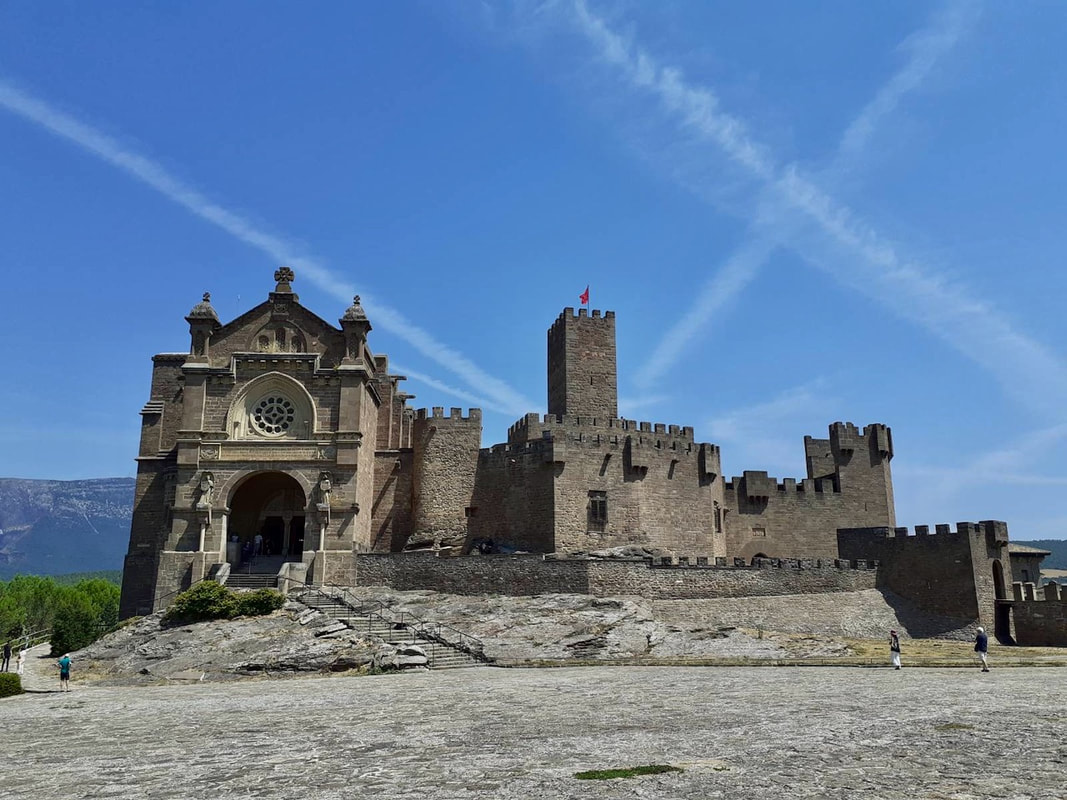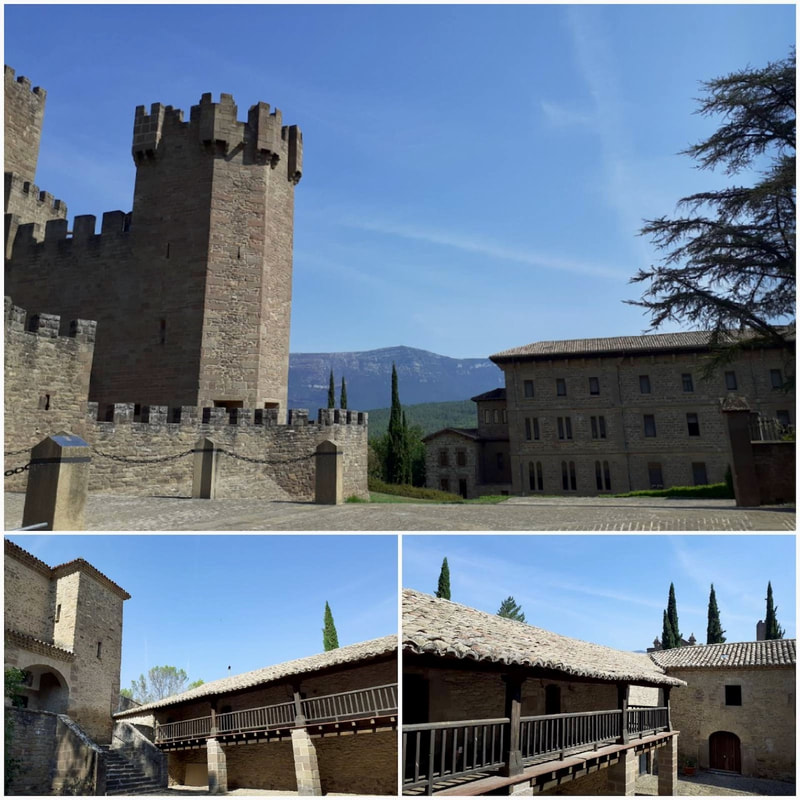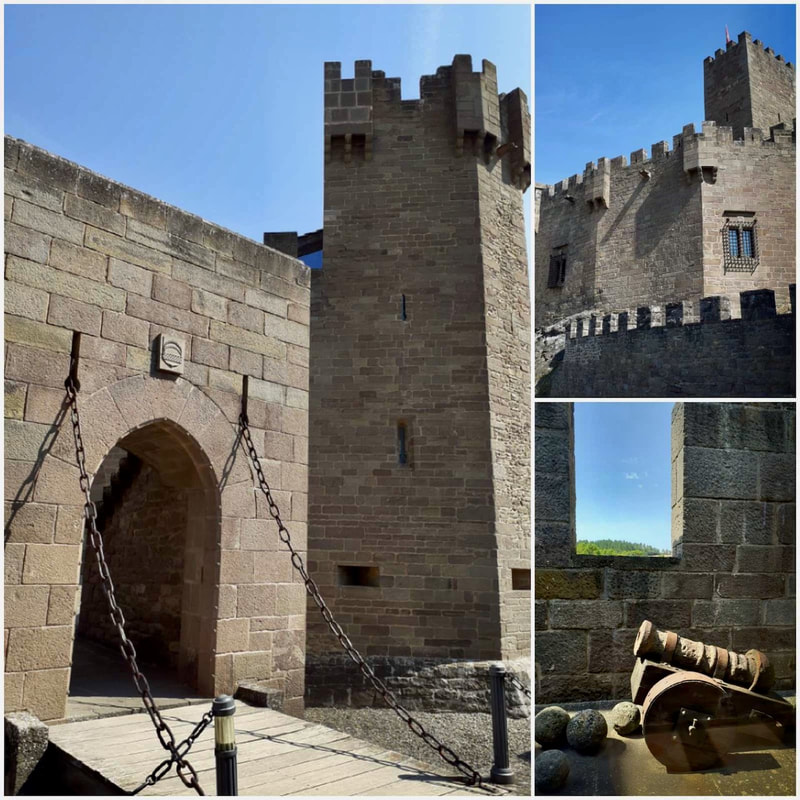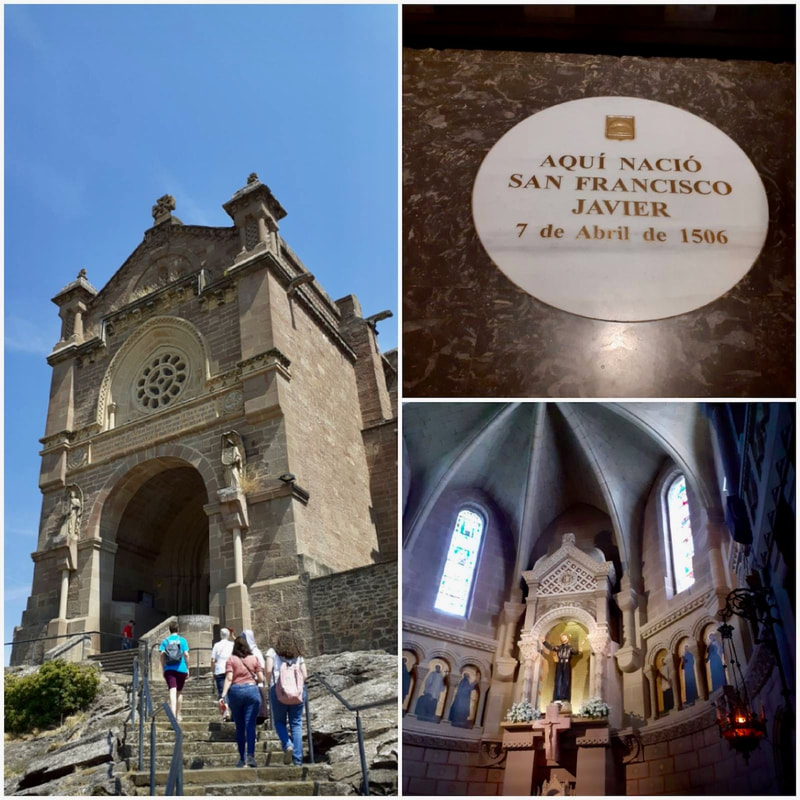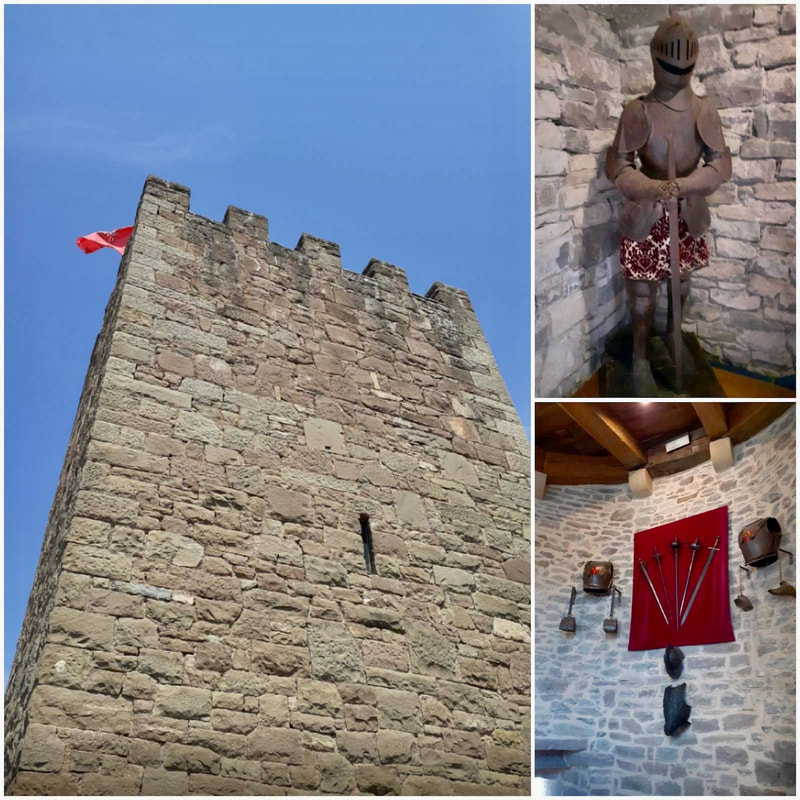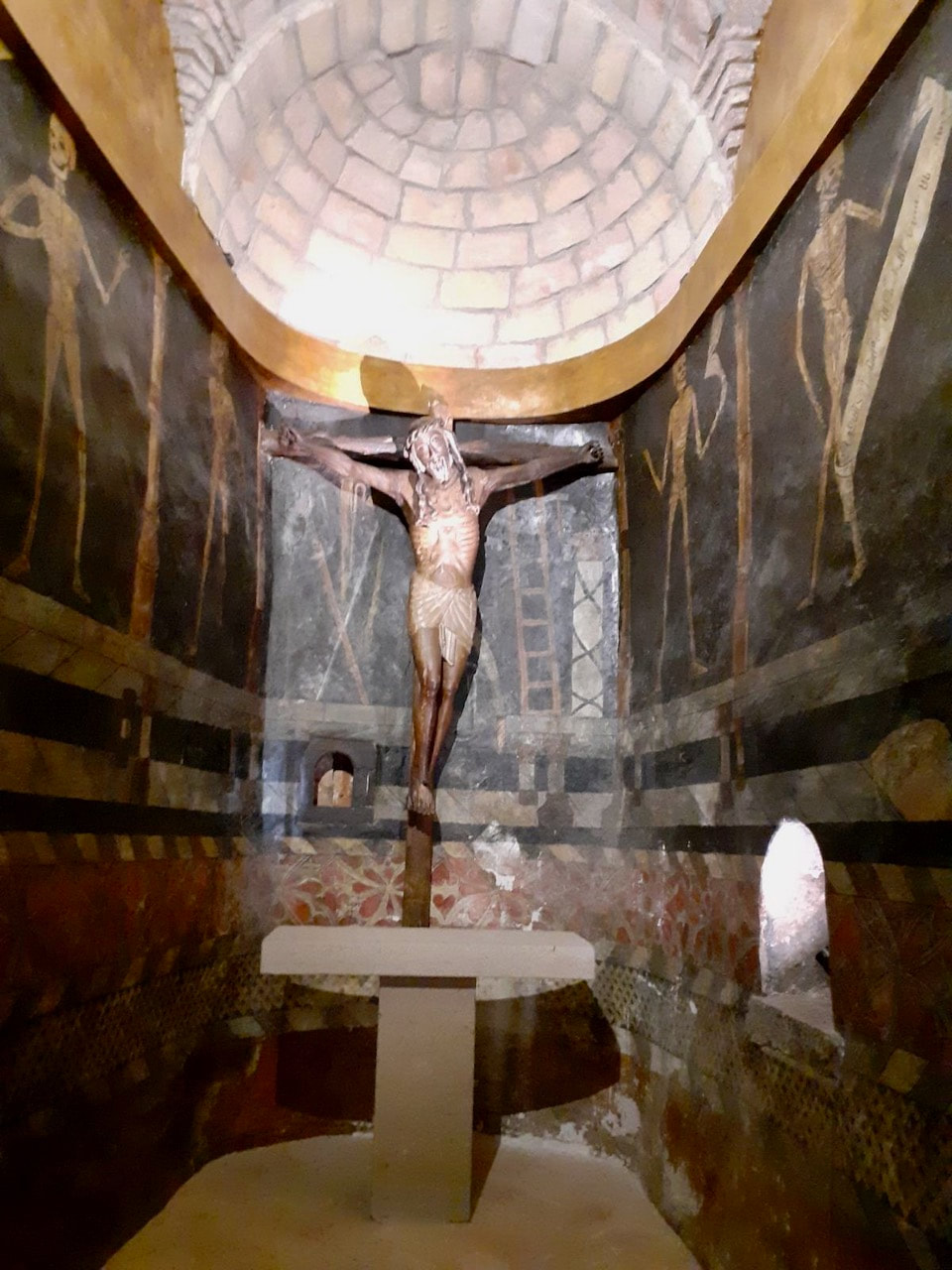The Castle Against Navarra's Sky
Written by Sr. Sylvia Jopillo,r.a.
The castle of Javier is like a giant magnet that draws people of diverse intentions, like iron filings. Some came for touristic curiosity, others for pilgrimages, while I went to claim a gift from the experience. I have waited long to visit this castle, which came at an auspicious moment. So this trip is excitingly important!
Navarra is at the northern border of Spain and France. In the summertime, its rolling hills transform into vast swatches of harvested barley fields interspersed with stands of trees that break into golden cubistic patterns bordered by the intensely green forested mountainsides.
Rocky-faced mountains loom farther in the distance while the rivers forge deep gullies between the hills.
Javier is a small town, a pleasant 1-hour-and-30-minute drive from San Sebastian through A-21 or the Autovia del Pireneo (Pyrenees highway) and into the winding provincial roads.
The imposing castle grandly stands out against the sky as one enters the town. I intuitively feel it is more of a fortress than a castle, even with its red flag waving in the breeze from its tower!
Navarra is at the northern border of Spain and France. In the summertime, its rolling hills transform into vast swatches of harvested barley fields interspersed with stands of trees that break into golden cubistic patterns bordered by the intensely green forested mountainsides.
Rocky-faced mountains loom farther in the distance while the rivers forge deep gullies between the hills.
Javier is a small town, a pleasant 1-hour-and-30-minute drive from San Sebastian through A-21 or the Autovia del Pireneo (Pyrenees highway) and into the winding provincial roads.
The imposing castle grandly stands out against the sky as one enters the town. I intuitively feel it is more of a fortress than a castle, even with its red flag waving in the breeze from its tower!
Bordering the castle grounds is a Jesuit House of Spirituality, the parish of the Annunciation that contains the baptismal font of San Francisco Javier, one of the first Jesuit missionaries who brought the Catholic faith to India, Indonesia, Japan, and eventually to China, where he died.
One enters the castle through its main gate beside a towering battlement and encounters cannons.
The castle has evolved through the centuries, and the original main structure was the single watchtower in the 10th century.
Then the battlements and bastions were added until the 14th century, when a new palace with its living quarters was built. So the fortress eventually became a castle when the wars ceased, and Navarra, in time, became part of the Spanish crown
The castle has evolved through the centuries, and the original main structure was the single watchtower in the 10th century.
Then the battlements and bastions were added until the 14th century, when a new palace with its living quarters was built. So the fortress eventually became a castle when the wars ceased, and Navarra, in time, became part of the Spanish crown
The castle's interior now houses a museum, the receiving hall, the living quarters, and various chapels. A church was the latest addition to the castle complex. It houses the spot where San Francisco Javier was born.
Francisco Javier is the youngest son of a Navarre noble family, Maria de Azpilicueta and Juan de Jaso were his parents, but his name took on his place of origin.
He was sent to Sorbonne, Paris, to study, where he met Ignatius de Loyola, and together they formed the first Society of Jesus (Jesuits). But he grew up surrounded by soldiers and weapons and calls of war.
He was sent to Sorbonne, Paris, to study, where he met Ignatius de Loyola, and together they formed the first Society of Jesus (Jesuits). But he grew up surrounded by soldiers and weapons and calls of war.
But what impressed me was the number of century-old family chapels and religious paintings within the castle.
Right at the entrance of the fort's vestibule is a small chapel with a walnut sculpture of the famous Smiling Christ of Javier (15th century), and on the walls are murals representing scenes from the "Dance of Death".
Right at the entrance of the fort's vestibule is a small chapel with a walnut sculpture of the famous Smiling Christ of Javier (15th century), and on the walls are murals representing scenes from the "Dance of Death".
As I sat quietly in the tiny chapel of the Smiling Christ of Javier, my gift softly came to me. Nothing earth-shaking or fancy, just a simple movement of the heart that confirms where life is leading me.
So I came away and took a last glimpse at the castle against the noonday sky, carrying within me the spirit of its saint still throbbing on its stone walls.
So I came away and took a last glimpse at the castle against the noonday sky, carrying within me the spirit of its saint still throbbing on its stone walls.
Read More on Spain
